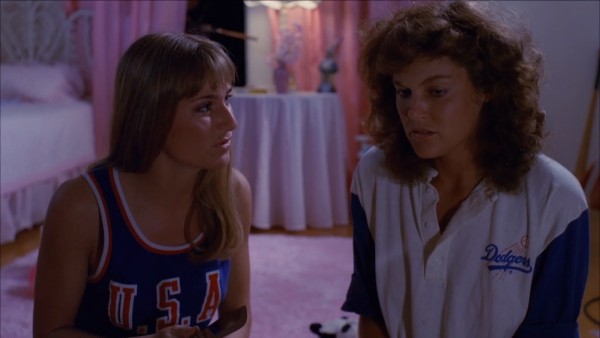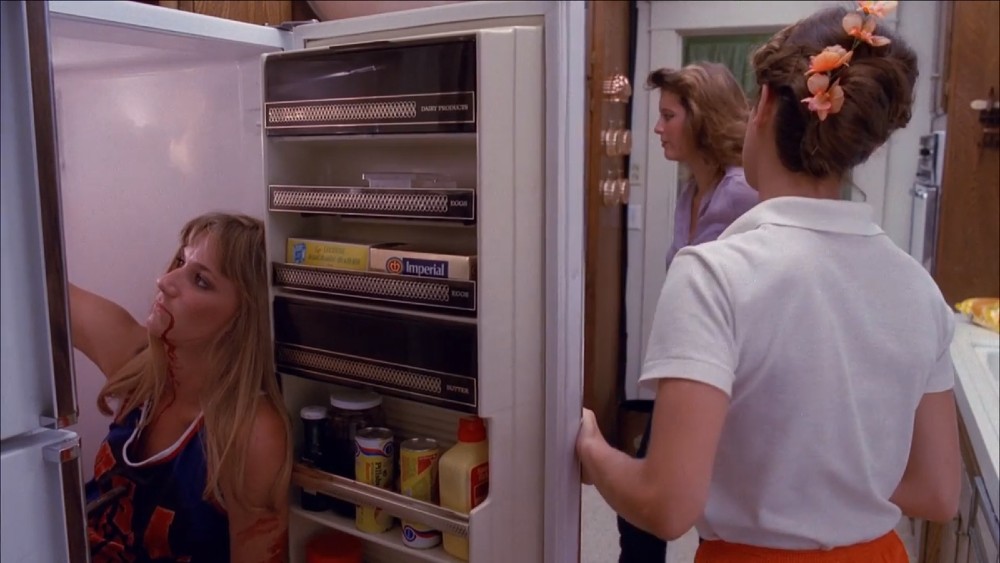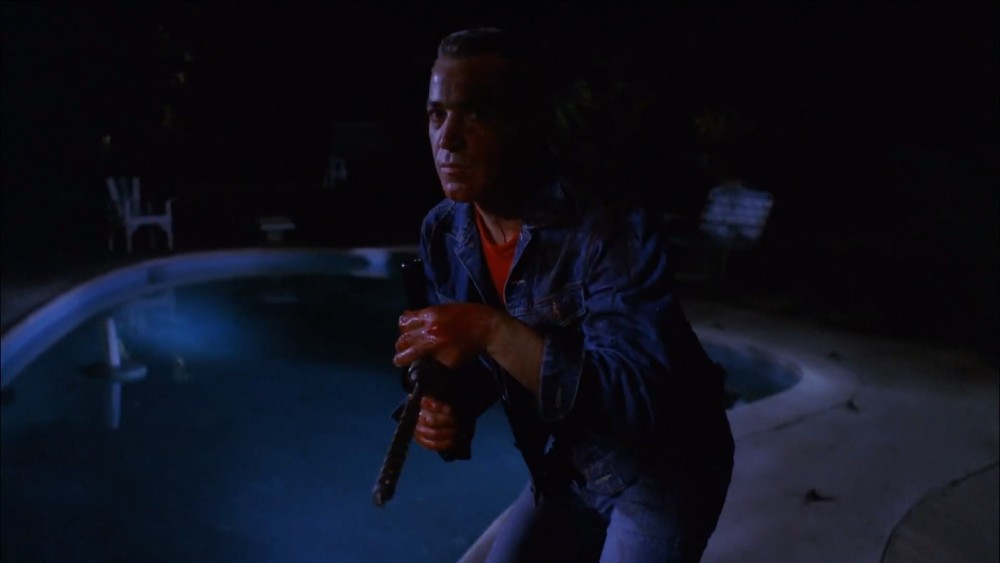'Slumber Party Massacre': Gory, Fun, and Feminist Slasher Remake
Slumber Party Massacre is a gory film with just enough commentary on sexist excuses, the validity of women's voices, and the inherent feminism of the slasher.
The Slumber Party Massacre (1982), written by Rita Mae Brown and directed by Amy Holden Jones, is a 1987 slasher film following a group of teenage girls terrorized by an escaped mental patient at a slumber party. This film inspired others such as Sorority House Massacre and ushered in a new subgenre of horror focusing on high school and college women. The Slumber Party Massacre and its sequels were all written and directed by women, setting them apart, and in a way, feeling like they are the satirical examples of the more straight films they inspired.
The Slumber Party Massacre is an interesting combination of sensibilities. The script was written by Rita Mae Brown, a feminist writer and activist most known for the autobiographical novel “Rubyfruit Jungle”. This film wonderfully combines its feminist script with treating some tropes of the slasher genre seriously, which creates a film that is both successful for its gender discussions and its scares.
The film comments on how tropes of sexuality, innocence, and gender constructs are often used in horror. In its opening scene, we see Trish (Michele Michaels) throw out all her dolls and toys, commenting on the loss of innocence common found within slasher films. Throughout the film, the teenage girls are shown as stronger than their male counterparts. In an especially memorable scene, the girls play volleyball while the men sit in the bleachers watching, flipping the script on a common trope of teen film.

Teen films in the 1970s and 80s–both in and out of the horror genre–such as Porky’s, Halloween, and Carrie showcase scenes exploring sexuality or the frequently used locker room scene. In The Slumber Party Massacre, we see a locker room scene where the girls are naked, but the way the scene is shot feels realistic and never lingers too long on their bare breasts. The focus of the scene feels more connected to building up the characters and establishing their personalities and interests–which include basketball and football–along with hyping up each other with compliments that feel better because they come from the other women in the shower.
Another important moment dealing with sex positivity and allowing women to be sexual without immediately seeing this as a bad thing for women and a good thing for men: Courtney (Jennifer Meyers) reads her sister Valerie’s (Robin Stille) issue of Playgirl and the film treats this as her growing up and accepting this part of life. The Slumber Party Massacre shows men leering at girls as part of their downfall, acknowledging the hurt and creepiness of this action without vilifying women for reading magazines and having their own libidos.
The Slumber Party Massacre- especially for being a film centered around teen girls at a slumber party being terrorized- shies away from showing the deaths of its female characters in gruesome ways. Often the death scenes involving women are short, and sometimes off-screen, yet when male characters die, we are shown more close-ups of the gore.
This works well to comment on the idea that this genre and especially this subgenre focus unnecessarily on showing mutilated female bodies. In general, this feels like a misconception of the slasher genre as a whole, where women often are the last survivors, the final girls which was a term coined by Carol J. Clover in her book “Men, Women, and Chainsaws: Gender in the Modern Horror Film”. The Slumber Party Massacre brings this to the forefront by making sure to show more men than women as victims.

The kills involving women become more inventive and unique with this directing style. In an especially memorable scene, Kim (Debra De Liso) is shown in the fridge as Courtney opens it, not seeing the dead body inside. This scene is subtle and suspenseful without focusing too much on her cause of death.
The women who die also remain fully clothed in those scenes, but are able to show off their sexualities and bodies when they choose. In an earlier scene, the girls all change into their pajamas in front of each other. We see their bodies, but the scene rings true to slumber parties and the closeness of friendships between women rather than feeling like its only inclusion is to show more skin.
One of the best moments of the film comes after a pizza delivery man is killed. The way he dies is one of the goriest in the film, yet when his body lies on the floor, the film focuses on Jackie (Andree Honore), Kim, and Trish getting ready to defend themselves, but realizing they are hungry. Kim says, “He’s so cold”, to which Jackie responds, “Is the pizza?” and proceeds to put the pizza box on top of the dead body, pick up a slice, and take a bite.
The kills within The Slumber Party Massacre create suspense throughout its short runtime, utilizing every minute to create a memorable slasher story with strong kills while also commenting on the treatment of women in horror films by writing fully developed female characters.
Throughout the film, scares come from every male character, such as the male friends Jeff (David Millbern) and Neil (Joseph Alan Johnson) who decide they want to scare the girls, and the sometimes creepy neighbor Mr. Contant (Rigg Kennedy) in which Trish’s parents put their trust.
The killer, Russ Thorn (Michael Villella) is represented by his weapon, an absurdly long drill bit. This weapon works to show how intimidated Russ is by strong women. The first target of his massacre is a woman who works at the telephone company repairing phone lines. He steals her van and uses it throughout the rest of the film.
Killing this woman with a long drill bit symbolizes Russ’s toxic masculinity and desire to control women. For a film focusing on this idea of men going after women he deems not feminine enough, The Slumber Party Massacre manages to keep away from showing overly grotesque murders of women.

Later on in the film, Russ enters a pink and gauzy bedroom through the window, pushing his drill bit in through this representation of femininity and youth. This moment showcases the internal themes of the film, which come even more to the forefront when he creepily says, “You know you want it, you love it. Yes” and moments later gets his overtly phallic drill bit cut down to a much shorter length by one of the women he has been trying to kill.
The Slumber Party Massacre wonderfully combines the suspense of its horror with its commentary on gender, creating a memorable slasher classic that began a horror trilogy entirely written and directed by women.
Movie Score: 4.5
Incluvie Score: 5
Related lists created by the same author
Slumber Party Massacre is a gory film with just enough commentary on sexist excuses, the validity of women's voices, and the inherent feminism of the slasher.
Related diversity category
This animated movie is based on the migration of birds from the north to the south.